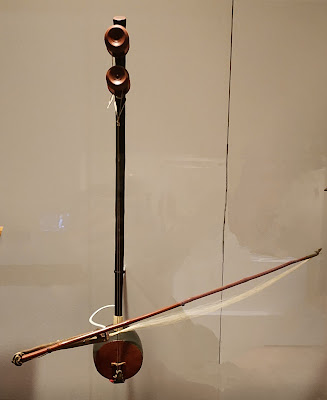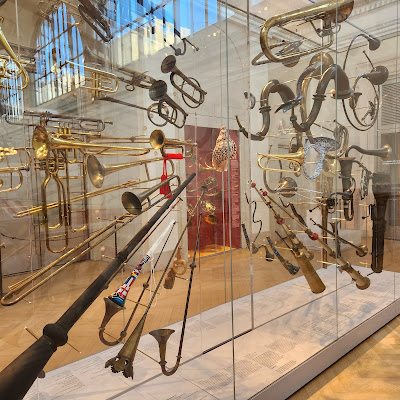The Art of Music exhibit showcases musical instruments from all cultures and eras.
These are a few of my favorites:
 |
| Cornet-trompe, attr. to Alphonse Sax, Paris, ca. 1862 |
 |
| Haegeum 해금 Korea, 19th century |
"The haegeum first appeared in Korea in the twelfth century and is used in court and folk ensembles. Frontal pegs, an inward-curving neck, and the bow hair passing between the strings, as with the Chinese xiqin, are typical. When moved, the bridge alters the tone quality, and when placed at the edge makes a froglike sound. The frog-shaped string holder symbolizes good luck and fertility."
 |
| Nagphani India, late 19th century |
Musicians of north-western India used the serpentine-shaped, trumpetlike brass Nagphani at weddings and festivals.
 |
| Lyre guitar Luigi Mozzani Italy, Cento, ca. 1915 |
 |
| Archlute David Tecchler Italy, Rome, ca. 1725 |
"Lutes with extremely long necks to accommodate bass strings first appeared in Florence at the end of the sixteenth century. The Roman archlute was one regional variation that featured single bass strings tuned diatonically. This is the most beautiful surviving example and was built by Salzburg-born David Tecchler, the most prominent stringed instrument builder in eighteenth-century Rome."
We say goodbye to family and NYC.
We are now heading south. We'll see you in Tennessee!


